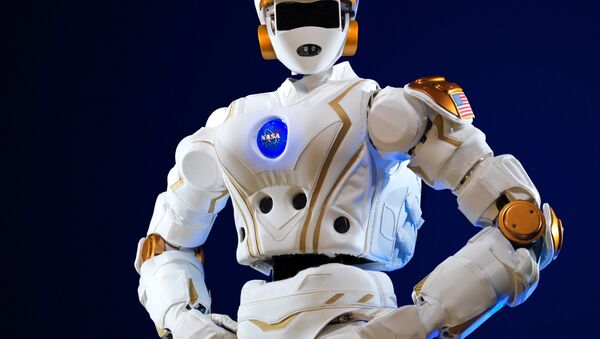Scientists from the Edinburgh Center for Robotics along with engineers from US space agency NASA hope to send Valkyrie to Mars as a servant for astronauts before the first human explorers reach the Red Planet in around 15 years' time.
We're live on @bbcnews Facebook later w/ one of the most advanced humanoids. @sethuvij on hand for Qs @EDINrobotics pic.twitter.com/QdnTrTyAHI
— Victoria Gill (@Vic_Gill) May 4, 2016
"At the moment the robot is a pretty basic shell which can walk up a set of three small steps and can reach out and grip something and pass it on to someone. It reacts if you push against it, either swaying or stepping back," Professor Sethu Vijayakumar, director of the Edinburgh Center for Robotics said.
"We want systems that work in environments built for humans."
The robot has stereoscopic camera eyes and cameras on its belly.
A team from @EDINrobotics are working with @NASA on a humanoid robot that they hope to send to Mars.. #Valkyriehttps://t.co/zd9hcVAsyF
— BBC Breakfast (@BBCBreakfast) May 5, 2016
However, Professor Vijayakumar admits that the biggest challenge is getting Valkyrie to interact with people.
"You have to have some pretty adaptable algorithms. The dream is to have something that can be a co-worker for astronauts on space missions, for example," Professor Vijayakumar said.
Valkyrie is pretty unique too; the humanoid is one of just three prototypes that have been developed in the world and the only human-sized robot in Europe. Its next step is become the first robot to successfully serve astronauts on Mars and eventually support the first human colony on the Red Planet
"Valkyrie is a huge scientific undertaking," said Professor Vijayakumar.


